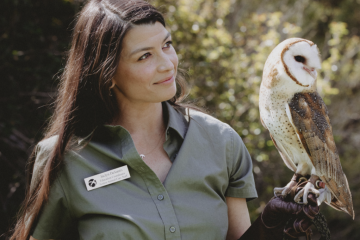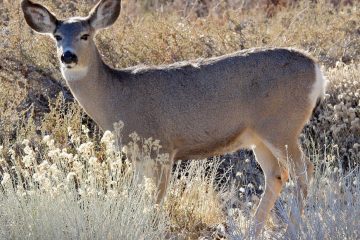Kim Corella to Discuss Threat Posed to Conejo Oaks by Goldspotted Oak Borer

On April 16 at 7:00 p.m., Kim Corella, a forest pest specialist in the Forest Entomology and Pathology Program with Cal Fire, will join COSF as our second Speaker Series guest to talk about “Oaks in Peril.” She will address the history, current range and dangers posed to our native oak species by a new invasive beetle, the goldspotted oak borer. To sign up for this free event, please go to our registration page.
The beetle’s journey to Southern California began somewhere In the mountains of southeastern Arizona when its larvae or eggs hitched a ride in a load of firewood to sunny San Diego County. There, its descendants began to feast insatiably on San Diego’s native oaks, often killing them. That was more than 30 years ago. Since then, the goldspotted oak borer (aka, GSOB, pronounced “gee-sob”), has methodically crept up the coast and into the mountains, attacking Coast Live oaks, California Black Oaks and Canyon Live Oaks.
Thanks in large part to human activities—primarily moving firewood—GSOB has spread into Orange, Riverside, San Bernardino and Los Angeles counties. It’s been spotted in snowy mountain towns like Idyllwild and Julian; it’s been spotted in baking suburban savannas, like Weir Canyon, just outside of Anaheim. One place it hasn’t been spotted—yet—is the Conejo Valley.
GSOB is, however, knocking on our door. Green Valley, in the Sierra Pelona above Santa Clarita, is contending with an infestation. Sightings have also been documented in Rice and Whitney Canyons above the San Fernando Valley.
GSOBs damage trees by eating the cambium that underlies the bark, interfering with the tree’s uptake of water and nutrients. “This is where the wood and the bark comes together, and GSOB cuts off the pathway for the tree to take up water,” Corella explains. “The tree can no longer take water from the roots and that part of the tree dies back.” But trees often don’t show evidence of distress, such as crown thinning, until the infestation is advanced and the tree is dying.
“Once you have this insect, it’s going to be like a lifetime thing. You can reduce the population, but it’ll take a decade or so of intense management to actually control it,“ Corella warns.— Sean Crommelin




0 Comments